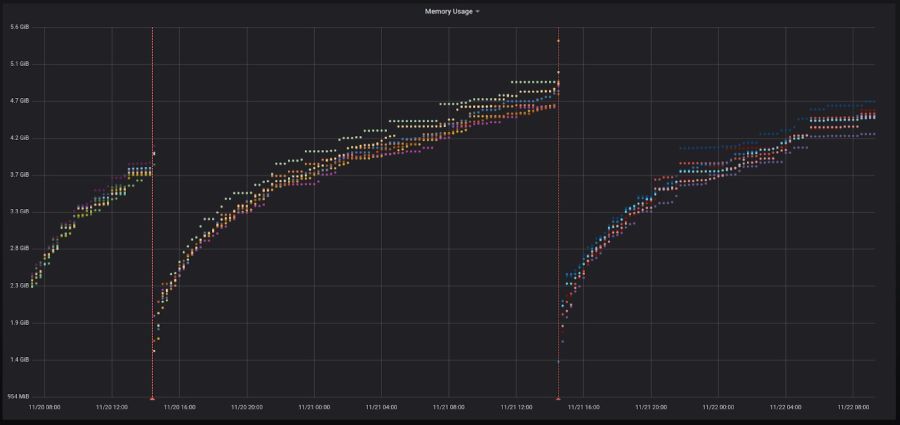

You can save visualizations and share them with others by exporting them or embedding them in a dashboard.Kibana offers various options to customize the visualizations, such as changing the axis labels, adding a title, adjusting the colors, etc.It provides various aggregation features, such as sum, average, count, etc., which can be applied to the data to summarize it and make it easier to understand.
 You can filter the data based on specific conditions to show only the relevant information. Choose the visualization that best represents your data. Kibana offers various types of visualizations, such as bar charts, pie charts, line graphs, etc. Kibana performs well when visualizing data from Log management, Infrastructure monitoring, APM, SIEM, or Business. Multiple visualization methods are combined in its Dashboards to provide a processable view of large data sets. It allows you to create charts, tables, histograms, and maps. Using Kibana with Elasticsearch, you can search, view, and visualize indexed data. Since it's written in java, developers and non-developers can work on it alike. It is a part of the three-pronged Elasticstack along with Logstash and Elasticsearch. Kibana is a web-based analytics platform that collects data from different sources and displays them. Wide range of performance metrics such as response time, latency, throughput, apdex score, HTTP failure codes and much more are covered. Tools for exploring and analyzing data. Real-time monitoring of performance data. It supports alerting based on performance thresholds, making it easy to monitor performance and receive notifications when performance issues arise. Millions of performance data points from across your applications can be dynamically collected by the platform, enabling you to resolve issues more rapidly and enhance the digital user experience.Īnd with the flexibility of cloud or on-premise deployment, everything takes place in real-time in the field.Ītatus provides a user-friendly interface for creating custom dashboards to display metrics, alerts, and other data, making it easy for organizations to display data in a way that makes sense for their business needs. If not Grafana, then what? You will be amazed to know there are a slew of versatile data monitoring products in the market today, and we will run down on the best 10 of them here.Ītatus is a SaaS-delivered application performance and error-tracking tool that offers full-stack visibility for all your applications. Sometimes its extra-technical nature has also been a letdown for non-technical business users. Now, this is a limiting factor, especially when looking for a whole-packed business reporting and data exploration model.
You can filter the data based on specific conditions to show only the relevant information. Choose the visualization that best represents your data. Kibana offers various types of visualizations, such as bar charts, pie charts, line graphs, etc. Kibana performs well when visualizing data from Log management, Infrastructure monitoring, APM, SIEM, or Business. Multiple visualization methods are combined in its Dashboards to provide a processable view of large data sets. It allows you to create charts, tables, histograms, and maps. Using Kibana with Elasticsearch, you can search, view, and visualize indexed data. Since it's written in java, developers and non-developers can work on it alike. It is a part of the three-pronged Elasticstack along with Logstash and Elasticsearch. Kibana is a web-based analytics platform that collects data from different sources and displays them. Wide range of performance metrics such as response time, latency, throughput, apdex score, HTTP failure codes and much more are covered. Tools for exploring and analyzing data. Real-time monitoring of performance data. It supports alerting based on performance thresholds, making it easy to monitor performance and receive notifications when performance issues arise. Millions of performance data points from across your applications can be dynamically collected by the platform, enabling you to resolve issues more rapidly and enhance the digital user experience.Īnd with the flexibility of cloud or on-premise deployment, everything takes place in real-time in the field.Ītatus provides a user-friendly interface for creating custom dashboards to display metrics, alerts, and other data, making it easy for organizations to display data in a way that makes sense for their business needs. If not Grafana, then what? You will be amazed to know there are a slew of versatile data monitoring products in the market today, and we will run down on the best 10 of them here.Ītatus is a SaaS-delivered application performance and error-tracking tool that offers full-stack visibility for all your applications. Sometimes its extra-technical nature has also been a letdown for non-technical business users. Now, this is a limiting factor, especially when looking for a whole-packed business reporting and data exploration model. 
#GRAFANA ANNOTATIONS INFLUXDB ZIP#
As a result, it is ideal for IT metrics like server uptime and API latency but less suitable for business metrics that require cutting data into segments like customer segments, product categories, and zip codes. Template variables are also available as dropdown options to create dynamic and reusable dashboards.Īs its default database, Grafana uses a time-series database rather than an Online Analytical Processing engine (OLAP). With its front-end written in Typescript and a Golang back-end, this data monitoring platform allows users to create and share interactive and dynamic dashboards with custom charts and panels using data from various sources, including InfluxDB, Prometheus, Elasticsearch, and many others. Once a dashboard is saved, an integer value is assigned to the id field.Grafana is a powerful open-source data visualization platform created by Torkel Ödegaard in 2014. Note: In the following JSON, id is shown as null which is the default value assigned to it until a dashboard is saved.







 0 kommentar(er)
0 kommentar(er)
